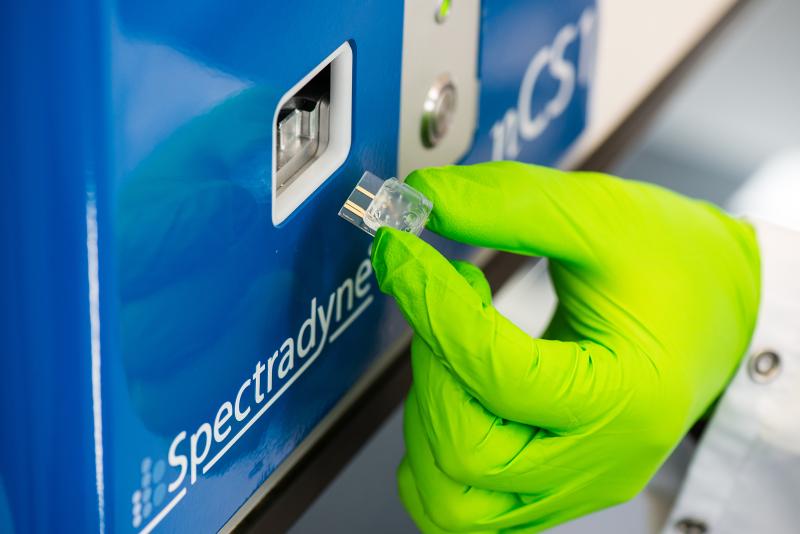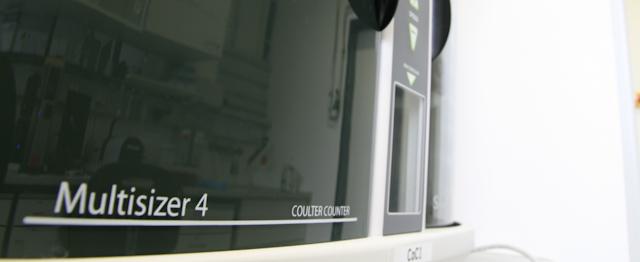Electrical sensing zone (ESZ) / microfluidic resistive pulse sensing (MRPS)
Electrical Sensing Zone (ESZ), also known as (microfluidic) resistive pulse sensing ((M)RPS), is a non-light-based technique for sizing and counting of particles in the nm- and µm-size range.

ESZ/MRPS works by applying an electrical field between opposite sides of an orifice. Particles suspended in a conductive electrolyte solution are aspirated through the orifice and, upon passage, increase the electrical resistance proportional to the volume of their non-conductive part (Coulter principle). Size determination is based on calibration with spherical sizing-standards and provides therefore an equivalent spherical diameter of the analyzed particles. Depending on the system and set-up, particles from about 50 nm up to 1 mm can be measured.

On the one hand, ESZ/MRPS is used as an early research tool in combination with nanoparticle tracking analysis [NTA] and dynamic light scattering [DLS]. The largest benefit when measuring in this low size range is the need for very low sample volumes of only a few µL. On the other hand, ESZ/MRPS is used as an orthogonal technique to validate results from light-based particle characterization techniques in the nanometer and visible size range, such as flow imaging microscopy [FIM] and light obscuration [LO]. The need for large sample volumes in the upper size range restricts the technique’s application during formulation development and stability studies. ESZ/MRPS additionally requires a minimum sample conductivity, which in some instances requires the addition of electrolytes.
ESZ/MRPS is suitable for the analysis of protein aggregates and particles, as well as colloidal systems, such as virus-like particles and polymers.
Need more information? Follow the links below and contact our experts with your questions today.
Contact us
Contact us
Need more information? We are happy to answer your questions!
Phone: +49 89 41 77 60 – 111
Mail: joerg.mueller@coriolis-pharma.com


